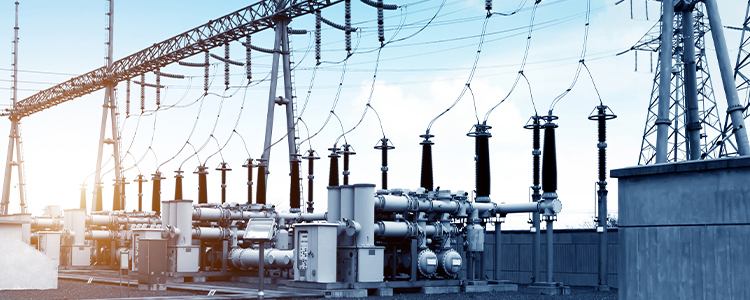- All
- Product Name
- Product Keyword
- Product Model
- Product Summary
- Product Description
- Multi Field Search


Views: 0 Author: Site Editor Publish Time: 2024-09-02 Origin: Site
Distribution transformers are the backbone of any electrical distribution system. They play a crucial role in stepping down high voltage electricity from power plants to a lower voltage suitable for use in homes and businesses. However, choosing the right transformer can be a daunting task. This article will help you navigate through the key features to look for in a distribution transformer.
Distribution transformers are designed to transfer electrical energy from the primary distribution system to the secondary distribution system. They are typically used in residential, commercial, and industrial applications. Understanding the role of these transformers is crucial before diving into the features to look for.
These transformers are designed to operate at a frequency of 50/60Hz, which is the standard frequency for most electrical systems worldwide. They are also designed to operate at a specific voltage level, which is determined by the local electrical utility company. The transformer’s primary purpose is to step down the high voltage electricity from the primary distribution system to a lower voltage level that can be used by end-users.
Distribution transformers are typically located in substations or on utility poles, and they are designed to operate continuously. They are built to handle a specific load, which is determined by the amount of electricity that will be used by the end-users. The transformer’s load capacity is measured in kilovolt-amperes (kVA), and it is important to choose a transformer that can handle the expected load.
Compactness is a key feature when selecting a distribution transformer. Modern designs utilize advanced materials and engineering techniques to minimize the size and weight of transformers without compromising performance. This compact design is particularly beneficial in urban settings where space is at a premium.
Reliability is another critical factor. Distribution transformers are expected to operate continuously and under various environmental conditions. Therefore, they should be designed to withstand temperature variations, humidity, and other environmental stresses. Reliable transformers have a longer lifespan and require less maintenance, making them a cost-effective choice in the long run.
Efficiency is a crucial factor in selecting a distribution transformer. High-efficiency transformers minimize energy losses, which is not only cost-effective but also environmentally friendly. According to the U.S. Department of Energy, the average efficiency of distribution transformers is about 98%. However, some modern transformers can achieve efficiencies as high as 99.5%.
Transformer losses are mainly categorized into two types: no-load loss and load loss. No-load loss occurs when the transformer is energized but not supplying load, and it is primarily due to the magnetization of the core. Load loss occurs when the transformer is supplying load, and it is mainly due to the resistance of the windings.
Modern transformers are designed to minimize both no-load and load losses. This is achieved through advanced core materials, such as amorphous steel, and improved winding designs. The choice of material and design can significantly impact the transformer’s efficiency and, consequently, the operating costs.
The cooling system of a distribution transformer is crucial for maintaining its operational efficiency and preventing overheating. Transformers generate heat during operation, and an effective cooling system is essential to dissipate this heat and maintain optimal performance. There are several types of cooling systems used in distribution transformers, including air-cooled, oil-cooled, and water-cooled systems.
Air-cooled transformers are typically used in smaller, less demanding applications. They use ambient air to cool the transformer and are suitable for environments where the ambient temperature does not exceed certain limits. On the other hand, oil-cooled transformers are commonly used in larger applications where higher cooling capacities are required. These transformers use oil as a coolant, which has a higher heat capacity than air, allowing for more efficient heat dissipation. Oil-cooled transformers are often equipped with radiators or fans to enhance the cooling effect.
Water-cooled transformers are used in applications where extremely high cooling capacities are needed. These transformers use water as a coolant, which is circulated through cooling channels or jackets to dissipate heat. Water-cooled transformers are typically used in industrial applications or in areas where ambient temperatures are high.
Insulation systems are equally important for the safe and efficient operation of distribution transformers. The insulation system is designed to prevent electrical breakdown and ensure the safe operation of the transformer under high voltage conditions. It consists of insulation materials, such as paper, oil, or gas, that are used to separate the windings and core from each other and from the transformer’s metal casing.
Modern transformers use advanced insulation materials, such as cross-linked polyethylene (XLPE) or ethylene propylene diene monomer (EPDM), which offer better thermal and electrical properties compared to traditional materials. These materials can withstand higher temperatures and provide better electrical insulation, ensuring the transformer operates safely and efficiently.
The construction of a distribution transformer is designed to withstand various environmental conditions and mechanical stresses. The core is typically made of silicon steel laminations, which reduce eddy current losses. The windings are made of copper or aluminum, depending on the application.
Material quality is crucial for ensuring the longevity and reliability of the transformer. High-quality materials may have a higher initial cost but offer better performance and lower maintenance costs over the transformer’s lifespan.
Selecting the right distribution transformer is a crucial decision that can have long-term implications for the efficiency, reliability, and cost-effectiveness of an electrical distribution system. By considering the key features discussed in this article, such as compact and reliable design, high efficiency and low loss, advanced cooling and insulation systems, and robust construction and material quality, you can make an informed decision that meets your specific needs and requirements.
content is empty!